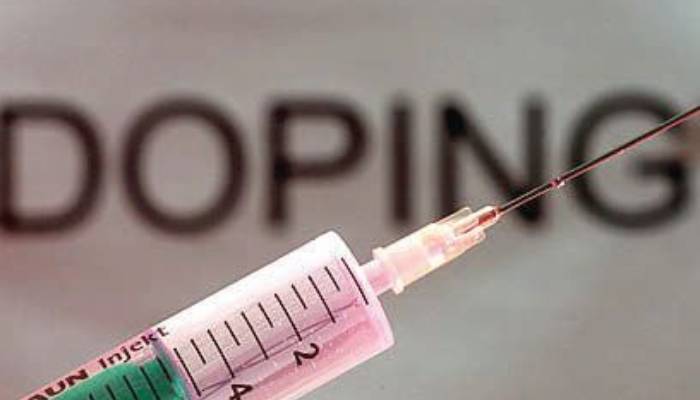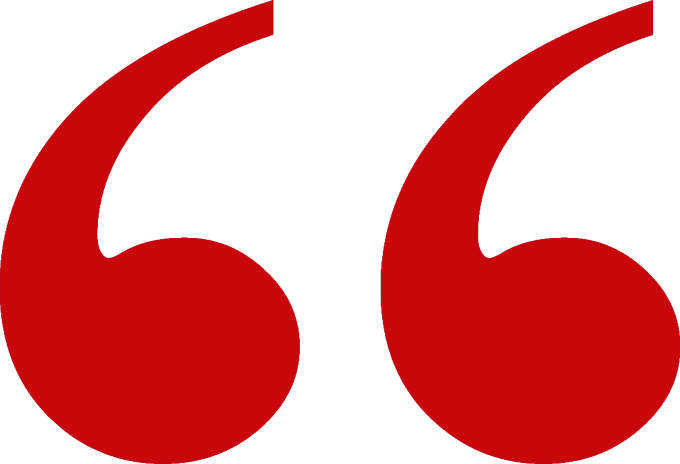
or

India joined the anti-doping movement by signing the Copenhagen Declaration on Anti-Doping in Sport in 2003 and UNESCO’s International Convention against Doping in Sport in 2005. However, India must provide awareness, education, facilitation and assistance to their athletes to make sure that they do not trip over…
I remember watching Ben Johnson break the world record in 100 meters in the Seoul Olympics in 1988. But I also remember his very quick fall from that exalted position when he was tested positive for steroids and was stripped of his medal. The world was shocked and stunned. His home country Canada’s newspaper headlined the emotion quite appropriately – “Why, Ben?”
About two and a half decades later, we witnessed our very own “doping scandal”. Six girls of the 4X400m Indian Relay Team who had won gold medals at the Asian Games and the Commonwealth Games were found tested positive for steroids some months later. The media went berserk and tom-tommed about the malaise in Indian sports and the suspect character of all Indian sportspersons and the establishment. It added to media sensation to have six athletic girls (Ashwini Akkunji, Tiana Mary, Juana Murmu, Mandeep Kaur, Priyanka Panwar and Sini Jose) hailing from different parts of the country, with a 74years old Ukranian coach as subjects of this story. However, the girls were exonerated from all charges by two Doping Panels in India and by a Commission of Inquiry set up by the government under Justice Mukul Mudgal; the findings being that the coach had given them some ginseng capsules which he had bought from the Asian Games Village in China and which unfortunately happened to be contaminated. The girls had not voluntarily ingested these pills but had merely followed the advice of their coach, who had nurtured and trained these girls into a crack winning team and had to give them allowed supplements (like ginseng) for their training, since the Athletics Federation or the SAI had run out of supplies.


The “victimization” of athletes under doping charges occurs because the authorities which are entrusted with enforcing doping laws in the country partially fulfil their mandate. The mandate includes enforcement and education. While the enforcement is on the basis of strict liability and is unsparing in its approach but education of athletes, coaches and sports federation lags far behind. This lack of effective education results in “victimization” of athletes as most of them are not familiar with English language therefore literature of doping must be prepared in vernacular as well to prevent such “victimization”.
I had the opportunity of representing these girls before the Doping Panels and was pleased that their stand was finally vindicated. However, what struck me during those months of researching and understanding the world of anti-doping and interacting closely with these girls (most of whom could hardly even communicate in proper English or Hindi and came from rural backgrounds) and hearing their stories (laced with emotion, grit, determination and pathos) was that while the intention of the law might be correct (i.e. to test, identify, accuse and prosecute doping cases), its implementation, shorn of real attempts to create awareness and spread education, is a non-starter. Law, in my opinion, creates a mandate for prosecution while prevention is the domain of policy. So while the former gets rolling upon the enactment of a new legislation, the latter flounders in the hands of administrators and policy implementers. And there lies the chasm.
The website of the World Anti Doping Agency (WADA) throws some light on the origin of the word “doping” – as derived from the Dutch word “dop” – the name ofan alcoholic beverage made of grape skins used by Zulu Warriors to enhance their prowess in battle. Use of enhancers and stimulants like caffeine and cocaine has always been in practice since ancient times to increase endurance and fortify one’s body. Apparently by the 1920s the world woke up to the problem of doping in sport and saw that as a distinct and unfair advantage that one sportsperson could have over the other due to doping. For the next few decades there were ad hoc efforts by some sports federations over the world but no attempt at a concerted worldwide level. Only in 1999, after a drug scandal rocked the Tour de France cycling tournament did the IOC (International Olympic Committee) convened the First World Conference on Doping in Sports at Lausanne, Switzerland. Following this WADA was established. WADA was initially funded by the IOC but now is equally funded by governments of the world and IOC and consists of representatives from the Olympic movement and public authorities
“India established the National Anti Doping Agency (NADA) and the National Dope Test Laboratory (NDTL) which act as a policy advisor on antidoping measures as also the testing and prosecuting agency. NADA carries out random testing of athletes in all disciplines (except maybe cricket where the BCCI has refused to adopt WADA standards) and if found with the presence of a “prohibited substance” initiates a disciplinary proceeding which is adjudicated by the AntiDisciplinary Doping Panels of NADA under the provisions of the National Anti-Doping Rules (which are parimateria with the WADA Code)”
India joined the Anti-Doping movement by signing the Copenhagen Declaration on Anti-Doping in Sport in 2003 and UNESCO’s International Convention against Doping in Sport in 2005. Signatory countries pledged to adopt appropriate measures (through legislation, regulation, policies or administrative practices) at the national and international levels which were consistent with the principles of the World Anti-Doping Code. In response to this development, India established the National Anti Doping Agency (NADA) and the National Dope Test Laboratory (NDTL) which act as a policy advisor on antidoping measures as also the testing and prosecuting agency for sportspersons found violating the doping norms. NADA kicked in around 2009 and though autonomous is headed by a bureaucrat from the Ministry of Sports. NADA carries out random testing of athletes in all disciplines (except maybe cricket where the BCCI has refused to adopt WADA standards) and if found with the presence of a “prohibited substance” initiates a disciplinary proceeding which is adjudicated by the Anti-Disciplinary Doping Panels of NADA under the provisions of the National Anti-Doping Rules (which are parimateria with the WADA Code). These Codes work on a sort of strict liability principle i.e. an athlete is personally responsible for what enters his or her body and there is no necessity to establish intent, negligence, fault or knowing use. Therefore the prosecution does not really have to establish anything except that the sample was indeed properly collected, secured, stored and tested and the results show that a particular prohibited substance (from amongst a host of themlisted as part of the Code and which keep getting updated by WADA) is present in the athlete’s body. It is upon the athlete to take up various defences – either the athlete admits to taking a prohibited substance and faces consequences or the athlete proves as to how the substance entered his or her body and that there was no negligence or fault on their part. The Doping Panel then determines the period of ineligibility which would be imposed on the athlete (which rotates around a basic of two years for the first offence) proportionate to the extent to which the athlete can rebut the presumption of his or her guilt.
The principle of strict liability is probably essential in order to combat doping in sport but it throws up tremendous challenges for an athlete. An athlete therefore is to be watchful at every moment, before eating every morsel, before every sip of whatever he or she drinks and before taking any medicine, even though it may be a harmless paracetamol. Ideally there is no issue in imposing such a strict duty. In Indian conditions however due to a number of circumstantial complications, the athletes stand at a disadvantage. A huge majority of the Indian sportspersons come from rural or semi-urban backgrounds and have been propelled by both talent and a dire need to crawl out of their poor backgrounds. Whilethe sports establishments do scout the talent and nourish them, there is tremendous laxity in manner in which they are handled. The Athletes are subservient to the system since they draw their economic and social dependence out of the sport. Besides they can hardly communicate or understand English or Hindi to be able to understand complex doping law and procedure or read ingredients of supplements they may take. They get treated by local doctors or vaids in their villages with unknown substances which may contain banned substances. They have coaches who may be aggressively ambition and may not flinch in advising their wards to use banned substances. They have no access to any laboratory where they can get any product tested. And more so they do not have proper medical or legal counselling to help them in case they find themselves having tested positive.
This is not to say that the law should be different. But there is no doubt that the government and NADA and the Sports Federations have to bend backwards in providing all awareness and education, facilitation and assistance to their athletes to make sure that they do not trip over1 . If then found guilty, they are free to punish. That would be a proper means to a desired end. I do realise that the application of astrict law cannot be suspended in the meantime, and that is not the argument. The thrust of this discussion and deep focus is that prevention through education and awareness has to proceed with equal intensity hand in hand with testing and prosecution. Otherwise we may lose a number of very good eggs with a few bad ones. It’s easy to point fingers but very difficult to help create an environment where the occasion does not arise.
Anish Dayal, Advocate, Supreme Court, is an alumnus of Cambridge University and specializes in media, entertainment and sports law.

Lex Witness Bureau

Lex Witness Bureau

Lex Witness Bureau

For over 10 years, since its inception in 2009 as a monthly, Lex Witness has become India’s most credible platform for the legal luminaries to opine, comment and share their views. more...
Connect Us:


The Grand Masters - A Corporate Counsel Legal Best Practices Summit Series
www.grandmasters.in | 8 Years & Counting
The Real Estate & Construction Legal Summit
www.rcls.in | 8 Years & Counting
The Information Technology Legal Summit
www.itlegalsummit.com | 8 Years & Counting
The Banking & Finance Legal Summit
www.bfls.in | 8 Years & Counting
The Media, Advertising and Entertainment Legal Summit
www.maels.in | 8 Years & Counting
The Pharma Legal & Compliance Summit
www.plcs.co.in | 8 Years & Counting
We at Lex Witness strategically assist firms in reaching out to the relevant audience sets through various knowledge sharing initiatives. Here are some more info decks for you to know us better.
Copyright © 2020 Lex Witness - India's 1st Magazine on Legal & Corporate Affairs Rights of Admission Reserved